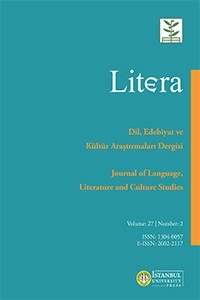Translating Money: The Role of Cognitive Complements in Literary Translation
The paper aims to emphasize that the use of cognitive complements during the translation process is essential. Based on the Interpretive Theory of Translation (ITT), this analysis sees translation as a cognitive approach. In the first instance, the author explores the presence of cognitive processes during the three phases of translation: comprehension, deverbalization, reformulation. Thereafter, the paper shows the difference between linguistic and extralinguistic elements that contribute to translation and stresses the importance of linguistic competencies and of the encyclopedic knowledge. Cognitive complements, understood as extralinguistic parameters, notional and affective, that contribute to understanding sense, help the translator carry the message not only from one language to another, but also from one cognitive world to another. In order to solve translation difficulties, the translator resorts to cognitive complements and adopts adequate strategies. When he/she wants to preserve the particularities of the source cognitive milieu, the translator uses literary translation or explicitations. On the contrary, when the translator intends to alleviate the specificities of the cognitive environment presented in the source text, he/she resorts to generalizing techniques or to adaptations. A case study is also included in the paper: the analysis of the way in which explicit and implicit references to money in an excerpt of the novel Eugenie Grandet by Balzac have been translated into English and Romanian. The analysis of the corpus shows that translation strategies should be chosen according to the knowledge that the translator shares with the target audience.
Keywords:
Interpretive Theory of Translation (ITT), cognitive complements, literary translation, money Eugénie Grandet,
___
- Balliu, C. (2007). Cognition et deverbalisation. Meta, 52(1), 3-12. https://doi.org/10.7202/014714ar. google scholar
- Balzac, H. de (1855). Eugenie Grandet. Paris : Alexandre Houssiaux, Editeur. google scholar
- Balzac, H. de (1889). Eugenie Grandet. Translated by Katharine Prescott Wormeley. Boston: Roberts Brothers. google scholar
- Balzac, H. de (2020). Eugenie Grandet. Traducere de Cezar Petrescu. Bucureşti : Litera. google scholar
- Delisle J. (1980). L’analyse du discours comme methode de traduction. Initiation a la traduction française de textes pragmatiques anglais. Theorie et pratique. Collection « Cahiers de traductologie », 2. Ottawa : Presses universitaires d’Ottawa. google scholar
- Delisle, J & Lee-Jahnke, H. & Cormier M. (1999). Terminologie de la traduction. Amsterdam : John Benjamins. google scholar
- Djachy, K. (2013). Le röle de la TIT en traductologie. Le Linguiste. Revue Internationale en science du langage, no. 4, Qom, pp. 21-30. google scholar
- Israel, F. et Lederer M. (1991). La liberte en traduction. Paris : Didier Erudition. google scholar
- Ladmiral, J.-R. (2005). Le « salto mortale de la deverbalisation ». Meta, 50(2), pp. 473-487. https://doi. org/10.7202/010994ar. google scholar
- Laplace, C. (1994). Theorie du langage et theorie de la traduction : Les concepts clefs de trois auteurs, Kade (Leipzig), Coseriu (Tübingen), Seleskovitch (Paris). Paris : Didier Erudition. google scholar
- Lederer, M. (1990). The Role of Cognitive Complements in Interpreting. Interpreting - Yesterday, Today and Tomorrow. American Translators Association. Scholarly Monograph Series, volume IV, edited by David and Margareta Bowen. State University of New York at Binghamton (SUNY), pp. 53-60. google scholar
- Lederer, M. (1994). La Traduction aujourd'hui. Le modele interpretatif. Paris : Hachette. google scholar
- Seleskovitch, D. & Lederer, M. (1984). Interpreter pour traduire. Paris : Didier Erudition. google scholar
- Srpova, M. (1995). La traduction, confrontation de deux experiences cognitives. Intellectica, no. 1, volume 20, pp. 157-170. google scholar
- Vrinat-Nikolov, M. & Maurus, P. (2018). Shakespeare a mal aux dents. Paris : Presses Inalco. google scholar
- Başlangıç: 1954
- Yayıncı: İstanbul Üniversitesi
